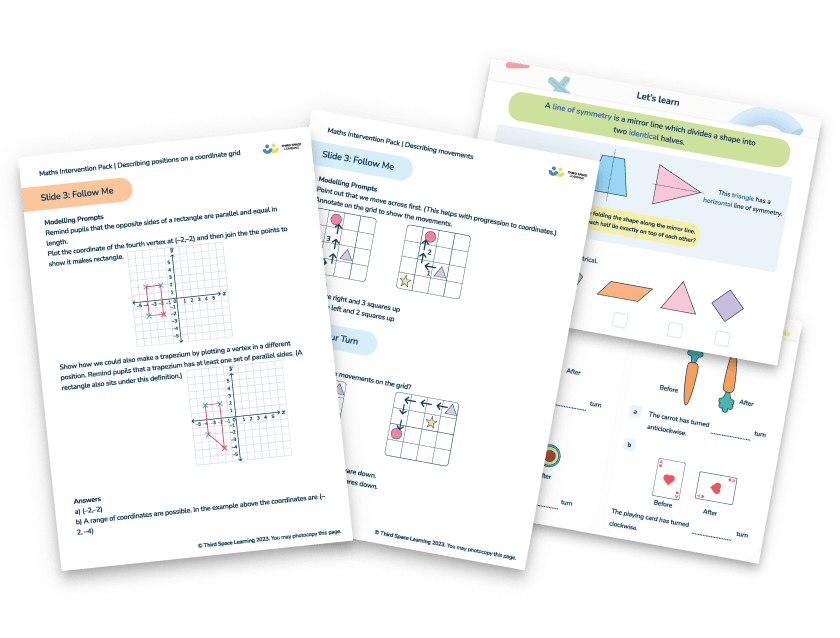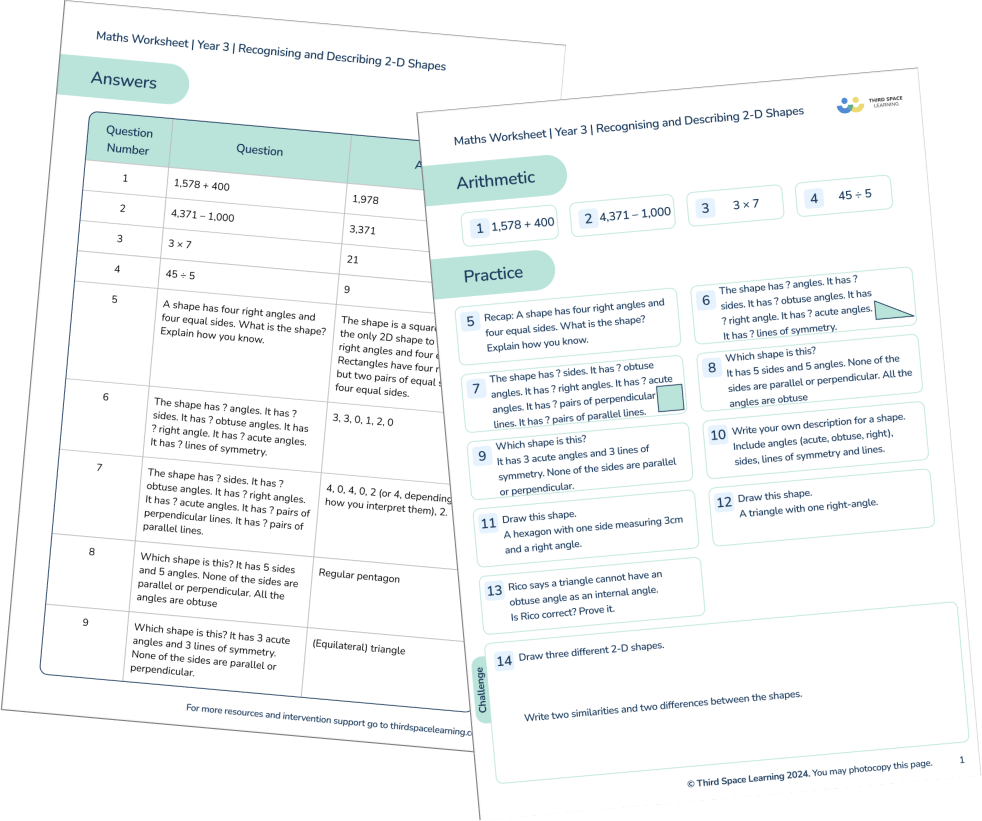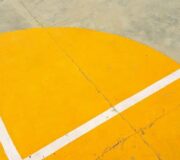What Is A Line Of Symmetry: Symmetrical Shapes Explained For Primary School
Lines of symmetry are a challenging concept for many pupils. This guide helps explain what a line of symmetry is and provides a few practice questions to test pupils’ skills.
This blog is part of our series of blogs designed for schools and teachers to help primary school age at any point of their lines of symmetry learning journey.
What is a line of symmetry?
A line of symmetry is a line that cuts a shape exactly in half.
In symmetrical shapes, like a regular polygon, this means that if you were to fold the shape along the line of symmetry, both halves would match exactly and be mirror images of each other. If you were to place a mirror along this line, the shape would remain unchanged.
However, if shapes and objects do not have two identical halves when divided with a line of symmetry, they are asymmetrical figures.
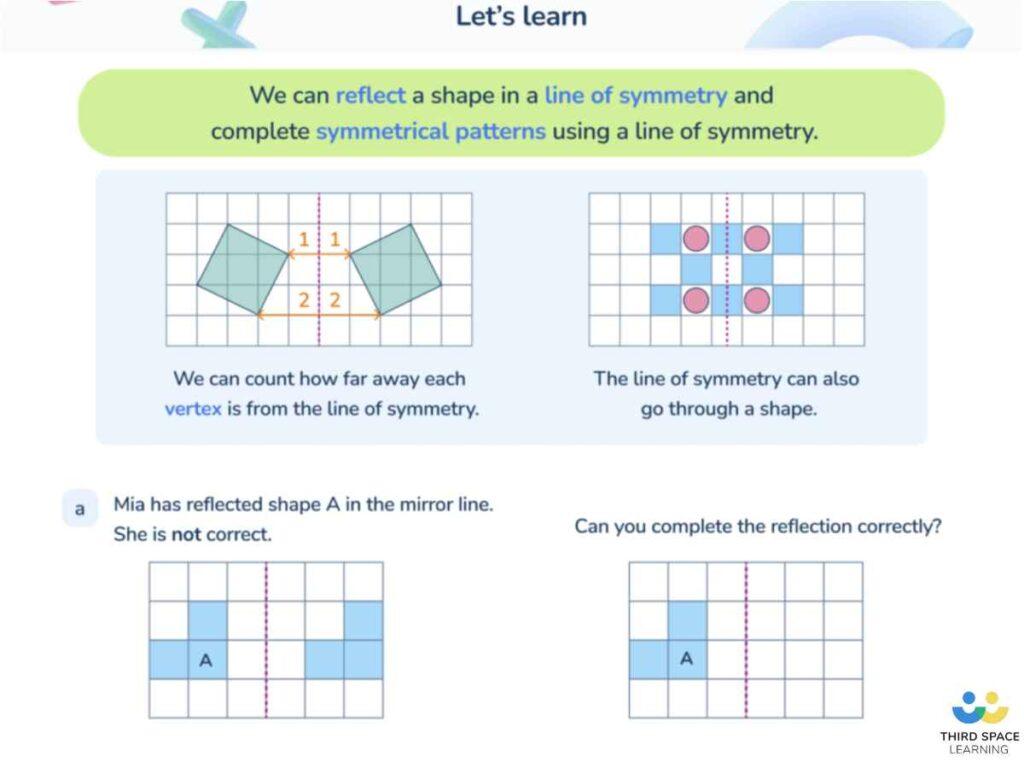
Symmetry of 2D Shapes KS2
Use this FREE symmetry in 2D shapes worksheet to help consolidate your pupils understanding of lines of symmetry.
Download Free Now!Lines of symmetry in different symmetrical shapes
Each shape has a different number of lines of symmetry, whether it’s a quadrilateral rhombus or parallelogram, a scalene triangle or isosceles triangle, children should understand that each shape has different lines of symmetry.
For example, a square has 4 lines of symmetry, as shown below.
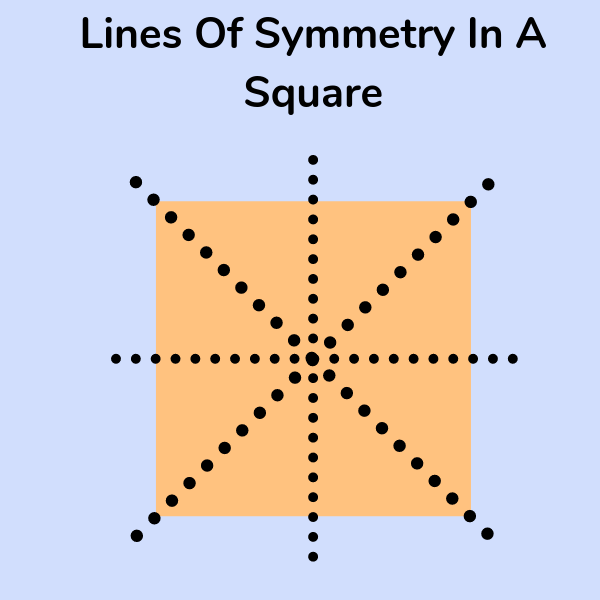
An equilateral triangle has 3 lines of symmetry.
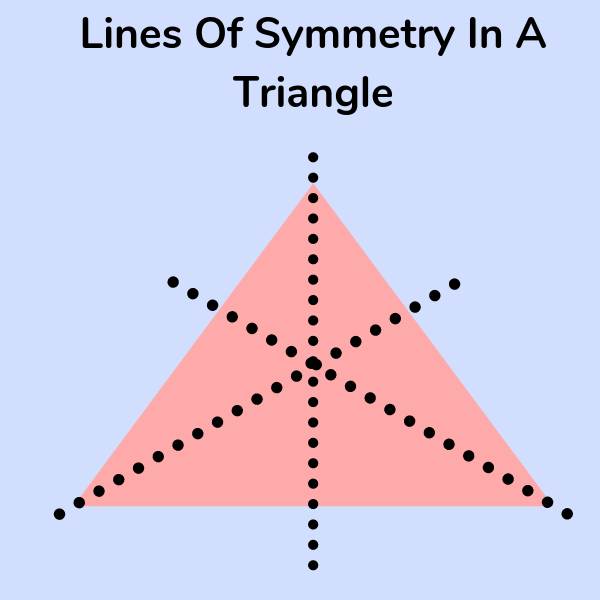
Pupils can practice identifying lines of symmetry using this free symmetry worksheet for Year 4.
Number Of Lines Of Symmetry
As well as having different numbers of lines that split the shape into identical parts, the lines can also be in different positions. For example, diagonal, horizontal or verticle.
Each symmetrical shape also has a different axis of symmetry. For example, a heptagon has 7 angles each with a diagonal line of symmetry. While a hexagon has 1 horizontal line of symmetry, 1 vertical line of symmetry, and 4 diagonal lines of symmetry.
So there are different types of lines of symmetry depending on the shape.
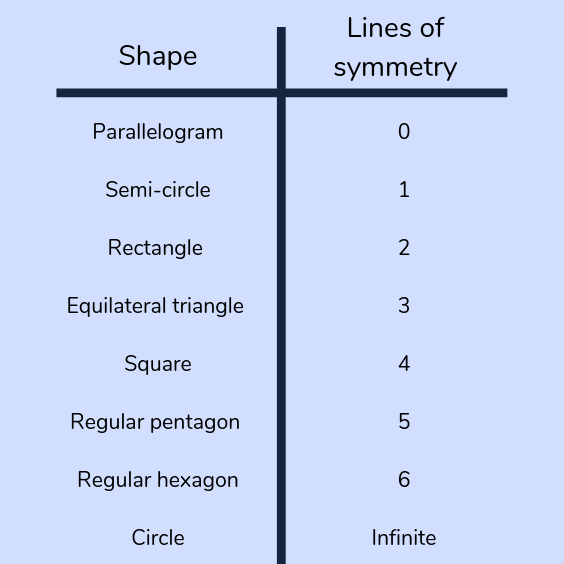
When do children learn about lines of symmetry in primary school?
Children are introduced to symmetry in Year 2, where they are taught to identify and describe the properties of 2-D shapes, including the number of sides and line symmetry in a vertical line.
This is then developed in Year 4, where pupils will identify lines of symmetry in 2-D shapes presented in different orientations and complete a simple symmetric figure concerning a specific line of symmetry.
The non-statutory guidance also recommends that children recognise line symmetry in a variety of diagrams, including where the line of symmetry does not dissect the original shape.
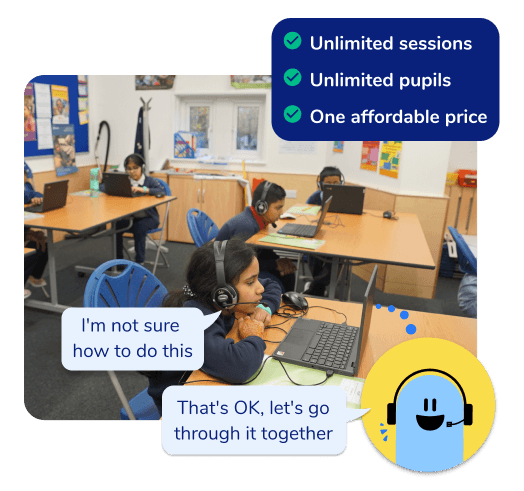
Unlimited primary maths tutoring with Skye, the voice-based AI maths tutor.
Built on the same principles, pedagogy and curriculum as our traditional tutoring but with more flexibility, reach and lower cost.
Join the schools already helping hundreds of primary pupils nationwide with Skye’s one to one maths tutoring
Watch Skye in actionLine of symmetry examples and practice questions
To practice lines of reflection symmetry, you can draw an imaginary line or mirror line onto different shapes. Or you can use practice questions like:
1) Here is a shape on a grid. Complete the design so that it is symmetrical about the mirror line. Use a ruler.
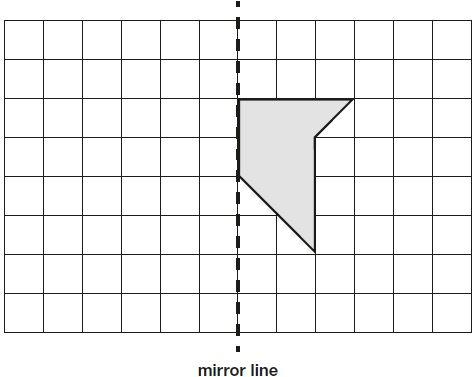
2) These two shapes are made from equilateral triangles. Draw one line of symmetry on each shape. Use a ruler.
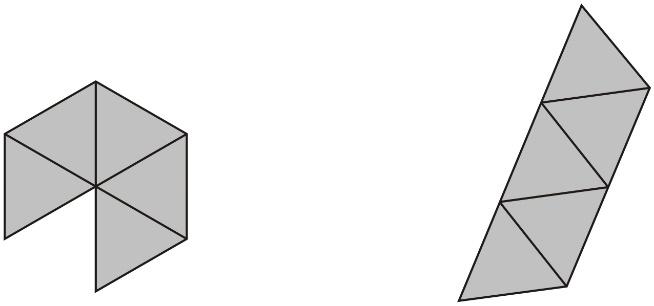
3) Here is a grid with eight squares shaded in. Shade in two more squares to make a symmetrical pattern.
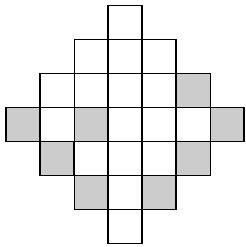
4) The letter D has a line of symmetry. Tick all the other letters that have a line of symmetry.

Wondering how to explain other key maths vocabulary to children? Check out our Primary Maths Dictionary For Kids. You can also check out our similar blogs:
DO YOU HAVE STUDENTS WHO NEED MORE SUPPORT IN MATHS?
Skye – our AI maths tutor built by teachers – gives students personalised one-to-one lessons that address learning gaps and build confidence.
Since 2013 we’ve taught over 2 million hours of maths lessons to more than 170,000 students to help them become fluent, able mathematicians.
Explore our AI maths tutoring or find out about a primary school maths tutor for your school.
